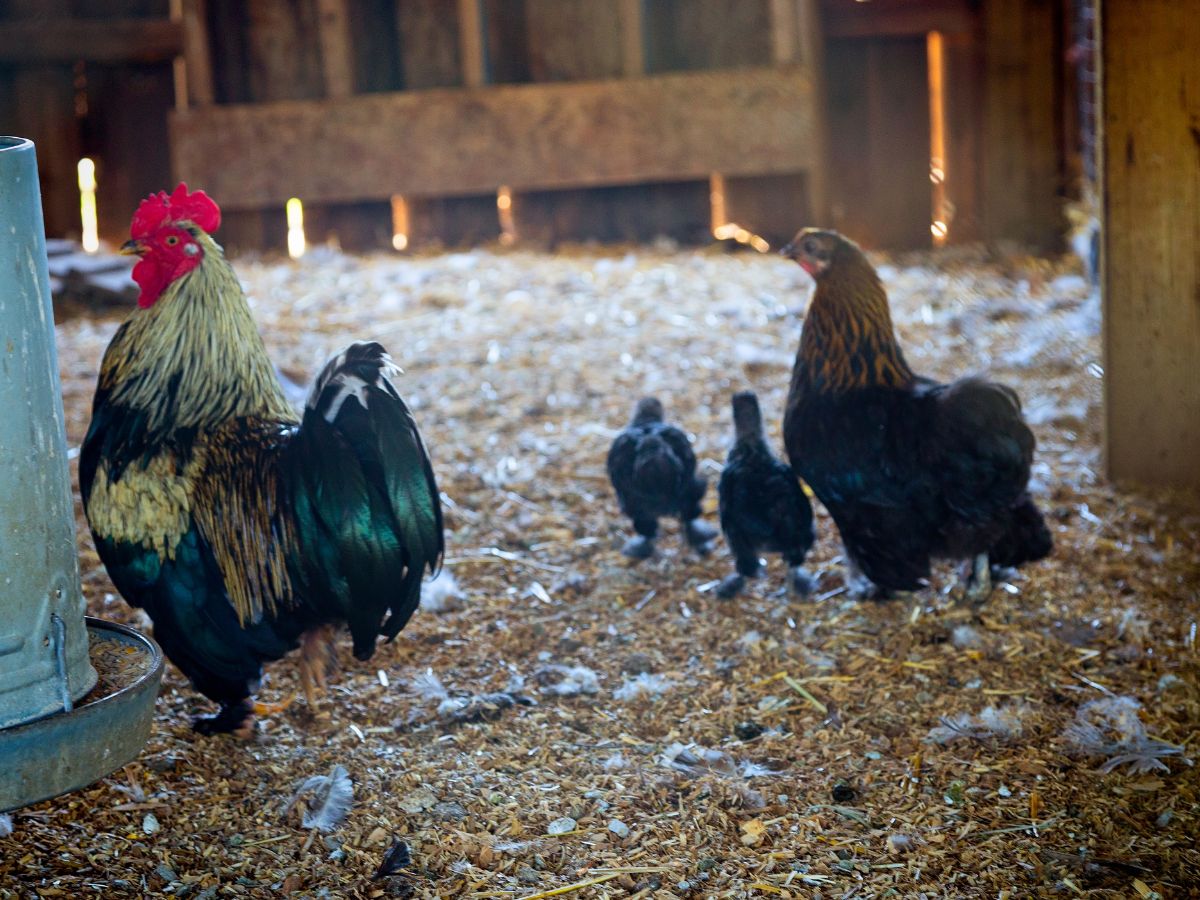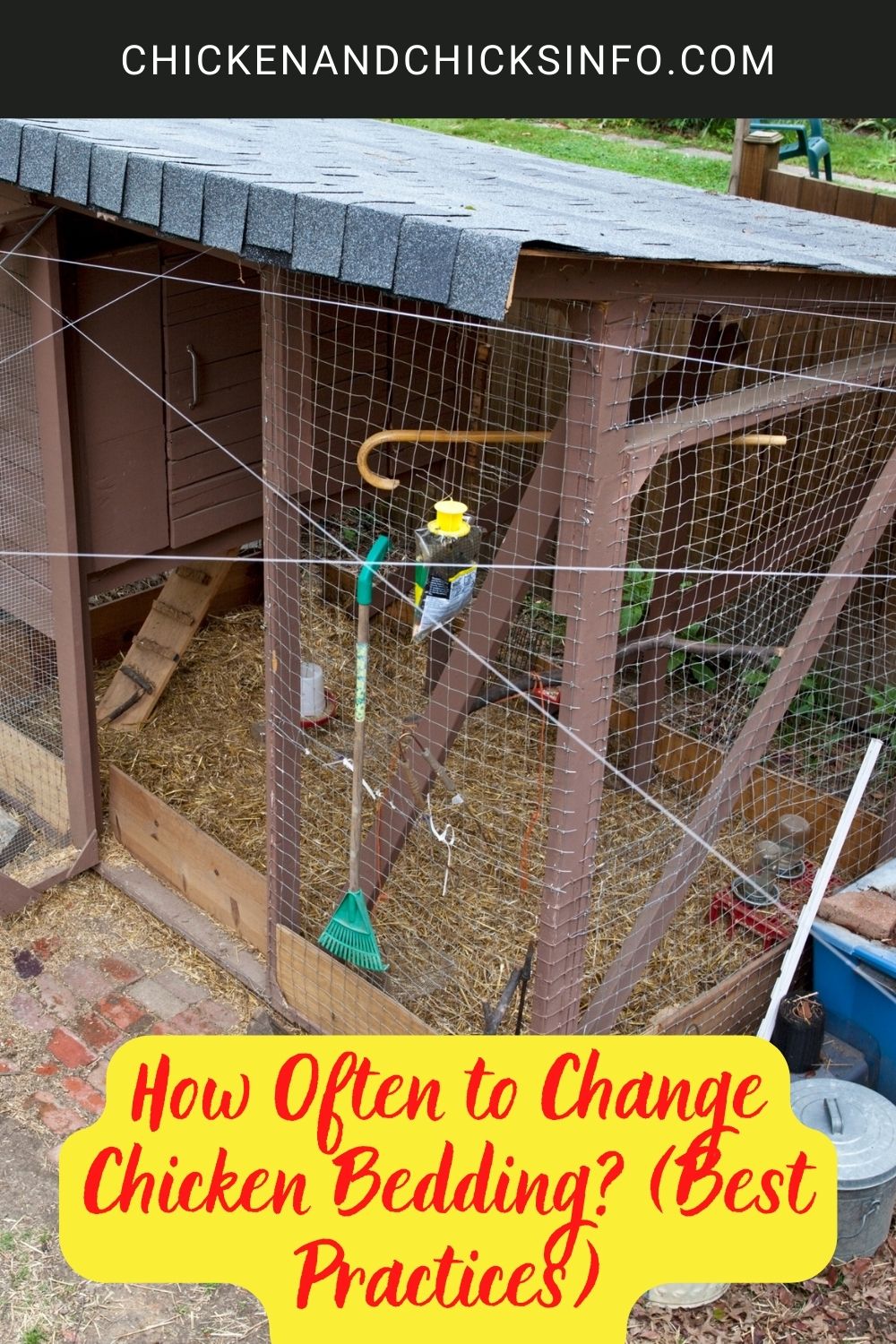
This post may contain affiliate links. Please read my disclosure for more info.
One of the myths about keeping chickens is that their coop requires cleaning out often and it’s a smelly and difficult job.
This couldn’t be further from the truth.
Chickens are one of the easiest backyard or farmyard animals to look after, they require very little maintenance.
How often to change chicken bedding? The average lifespan of chicken bedding or litter as it’s called is around 4-6 months. It does depend on the type of bedding you’re using, the number of chickens, and environmental factors of course.
There are a couple of ways you can approach adding bedding to your chicken’s coop. Here are the main two methods:
Jump to:
Deep Litter Method
Most backyard chicken owners use the “deep litter” method because it’s sustainable and easy to manage.
To use this method, basically, you create a compost pile from your chicken’s poop on the floor of their coop.
It’s not as gross as it sounds.
To do this, you start with a layer of pine shavings or similar organic matter. This forms the “browns” (to make compost you need browns and greens matter), while the chicken poop is the high-nitrogen “greens”.
You can add more shavings to keep the floor composting, and your chickens will aerate it while they go about their foraging and scratching.
After around 2 months it’ll be a deep litter. By 6 months, it’ll be a built-up deep litter, and by 12 months you’ll have fully built up compost.
There are some pretty good benefits to using the deep litter method:
- It’s really easy to manage and you end up with compost material
- Your chickens get to forage and they will find microbes and live culture in the material that’s good for them
- It doesn’t smell, in fact, it can smell pleasant if you add some lavender or wood shavings
- It’s completely safe
Related content - Want an effective worming solution for your flock? Check out Valbazen for chickens.
Normal Litter/Bedding Method

While the deep litter method is an ongoing process of using litter and chicken droppings to create compost material.
The other option is to do the same as you would when keeping a pet housed up, to change their bedding as and when it needs it.
Most owners have a few inches of bedding into their coop. They scoop out all the waste and change most of the bedding weekly. You will probably need to give their coop a much more thorough clean once a month or so too.
I know some backyard chicken owners that shovel out the bedding once a week, once a fortnight, and even once a month. It all depends on how much space each chicken has, and how much pooping and mess they make.
Common Types of Bedding for Chickens
If you’re not sure what material to use for your chicken’s bedding, here are the most popular choices:
Wood Shavings
Wood shavings are the most popular choice amongst backyard chicken owners. It’s an inexpensive and easy way to add a nice deep layer of bedding and comes in many forms.
Cedar and pine are two of the most common. Cedar shavings are known to cause respiratory issues in smaller animals and there is some concern for chickens, so I personally avoid them.
Pine shavings and other miscellaneous wood shavings are fine, however. Opt for bigger shavings rather than smaller ones, as these are less likely to be dusted and ingested
The main benefits of wood shavings are that they’re absorbent, easy to use, shovel in and out, and do an awesome job at controlling odors.
Straw

Straw is a more natural choice, and something chickens and other birds would more likely use in the wild without the ability to get their own wood shavings.
It’s fine for bedding, but not as good as wood shavings. The main problems with straw are that it’s not as good at absorbing moisture as shavings and it’s a lot more difficult to clean.
This means more work for us. No thanks!
If it’s all you have, however, chickens love straw. You’ll see them digging and foraging around in it, and might even run around with a bit in their beak. It’s fun to see.
Shop-Bought Formulated Bedding
There are some great bedding materials that have been specially formulated to do all the good stuff; reduce odors, absorb moisture, be easy to clean, and so on available to buy.
One of my favorites is this Flock Fresh Chicken Bedding by Standlee:
It’s made with chopped straw (I know, I said above straw isn’t the best, but read on), alfalfa, and clinoptilolite (zeolite) granules.
Together, this combination is more absorbent and odor-free than each of the individual materials. It promotes foraging, is biodegradable, and is perfect for composting.
Unless you are able to create your own wood chippings, I recommend giving a bag of this a try.
In Summary - How Often to Change Chicken Bedding?
There you have it, a few different types of materials that make for great chicken bedding and how to keep their coop nice and clean.
Mucking out or cleaning a chicken coop is surprisingly easy. The fact that chicken poop makes awesome fertilizer is an added benefit.
In an eggshell; you can either use packs of formulated bedding or wood chippings and keep on top of cleaning out their coop weekly.
Or, opt for the deep litter method and build up layers over 4-6 months to create a thick layer of compost to use in your garden.





